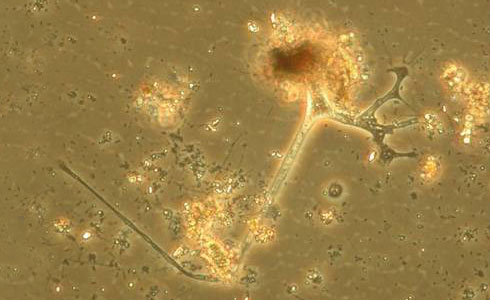Taxonomy
The vampire amoebae are a very diverse group of protozoa.
Fewer than 20 species have been properly described so far, but work conducted at the Natural History Museum suggests that there are several hundreds, or thousands, awaiting discovery – something that is true for all protozoan groups.
Like other amoebae, the vampyrellids have a highly plastic and deformable shape. They move and feed using special extensions of the cell called pseudopods.
The pseudopods of vampyrellids and their relatives (the protozoan phylum Cercozoa) are very thin and sometimes branched. From a mechanical point of view they are very different from the rounded, broad pseudopods of better known amoebae such as Amoeba proteus, which belongs to a completely distinct group of amoeboid protozoa (the phylum Amoebozoa).
The ancestors of these two major groups of amoebae probably diverged from each other about 1 billion years ago, long before animals and land plants first appeared.
